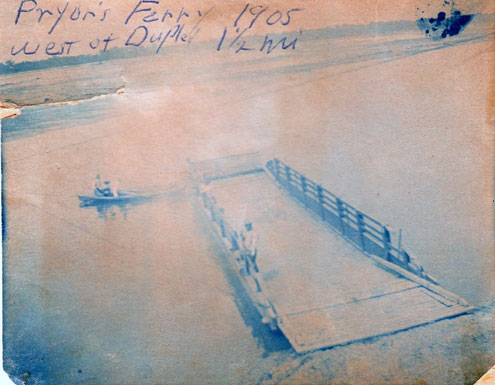
One day in the late 1890s or early 1900s my maternal great-grandparents, James Edward and Ida Mae Wright, and their children left their Elwood farm headed for Durant by wagon. Crossing Red River was done by ferry.
During the holidays of 1986 May Bass, James and Ida Mae’s youngest child, recalled the trip in a recorded conversation. She stood on one side of the ferry, she stated, with her mother and siblings while her dad stayed up front with the mules lest they get spooked.
Once across the river, it was on to Durant to visit relatives. Their return trip later that day meant riding the ferry again.
Just how many ferries operated on Red River since the establishment of Fannin County is hard to say. And this article is not an exhaustive history of the subject. Some ferries may have operated without much notice. Nonetheless, there is enough information available to form a general historical sketch.
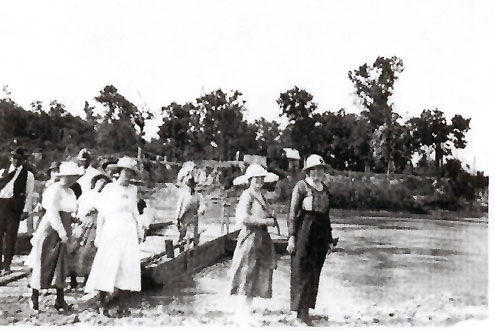
It should be noted that local ferries were not elaborate in design. They were wooden, sometimes crude structures that may or may not have side rails. Usually they were cabled, i.e., anchored to big trees, or other heavy objects, on both sides of the river by a heavy, sturdy rope, thus assuring that they crossed successfully rather than float downstream.
The county required that anyone wanting to operate a ferry post a bond, and obtain a license that had to be renewed regularly, perhaps yearly. Moreover, the rates charged by a ferry operator were set by the county.
Perhaps the earliest ferry operating on the river was run by early day Fannin County settler Daniel Rowlett. The Texas State Handbook Online notes: “In 1841, [Rowlett] established a ferry across the Red River between his home at Lexington [close to the river and roughly due north of Ivanhoe] and Indian Territory.”
Evidence indicates that another ferry was operated north of Mulberry in the late 1880s. In his excellent volume recounting the history of the Mulberry/Ravenna area entitled The Gathered Words, local historian Gregory Hall, quoting the work of another researcher, notes that three men, Thomas M., William H. and Zachariah W. Hall (no kin to Gregory): “‘subleased the Indian Territory ferry land rights from the Kemp family. On the Texas side of the river, the Halls leased the landing...rights from the heirs of the Smith Plantation in Mulberry . . . .’”
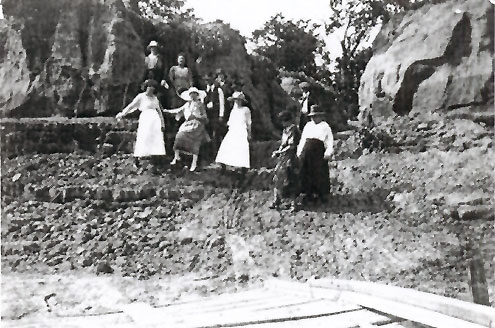
Another reference to Hall’s Ferry came in the July 8, 1892 Dallas Morning News when it reported that four men, Arthur Cross, Charles Dabney, Lee Perminter and Harry Roberts, were preparing to boat down Red River to Shreveport. It noted that they “loaded a wagon with all necessary provisions, put their boat on another wagon and left for Halls Ferry” where the boat “was launched to-day, and they started on their pleasure trip, hunting and fishing on the way down.” It finally noted that the “boys, before leaving, christened the boat ‘The Mud Hen,’ and will let The [Bonham] News hear from them weekly.”
Moreover, several references to the road leading to Hall’s Ferry, logically called Halls Ferry Road, can be found in late 19th and early 20th century minutes of Fannin County Commissioner’s meetings.
Hall further notes that the Kemp and Colbert ferries were the primary boats in this area in the last quarter of the nineteenth century. They transported literally thousands of people who settled in Grayson and Fannin counties.
The Kemp Ferry basically served an area between Mulberry and Kemp, Oklahoma. Hall writes: “Joe C. Kemp and Simon Kemp were granted charters by the Chickasaw legislature to operate ferries across Red River for periods ranging from five to ten years between 1876 to ’98.” A good clue to the importance of the Kemp Ferry is found in the minutes of the March 14, 1881 Bonham City Council meeting which notes that the Kemp Ferry Road apparently ran all the way to Bonham.
Quoting from The History of Bryan County, Oklahoma, Hall notes that Colbert’s Ferry, located in the area of the current Carpenter’s Bluff bridge, was operated by B. F. Colbert, “‘a well-to-do Indian who lived north of Denison in the Territory.’” Although there were bridges in the area at times, they frequently washed out and Colbert’s Ferry would resume operation.
By 1900 another ferry was operating due north of Ivanhoe, perhaps in the same area where Daniel Rowlett once ran his. Pryor’s Ferry, as it was called by former Fannin County historian and artist Casey Grimes, was run by two men, more than likely brothers. The 1900 Fannin County census shows Andy P. Pryor to be a “Ferryman – Red River.” A. P. Pryor is listed as a farmer, but the census shows that he had a boarder who worked as a “ferryman.”
Other Fannin County men decided to test their hands at running ferries in 1900 as well. In its March 13 meeting, county commissioners granted permission to “A. O. Ellis and Buck Linney . . . to run and operate a public ferry on Red River in the North West part of Fannin County, Texas, immediately north of Anthony and on the public road Known as the Savoy and Kemp road . . . .” The 1900 census shows an Oscar Ellis living with the Linney family and working as a “ferryman.”
In their May 22 meeting, commissioners granted a license to “E. Haggard to run and operate a public ferry on Red River in the North West corner of Fannin County . . . at a point known as the Haggard crossing.” 1900 census records show an Enoch Haggard living in Fannin County. The exact location of the Haggard Crossing is unknown.
At their April 20, 1903 meeting, Fannin County Commissioners approved an application by E. T. Davidson to “operate a ferry across Red River where the Bonham, Ravenna and Mulberry Road . . . crosses the same.” The commissioners also decided that “the rate of ferriage for said ferry be fixed as follows, to wit: For wagon and team with occupants 25 cents each way; for horse and rider 15 cents each way; for footmen 10 cents each way; for buggy and horse with occupants 25 cents each way; for cattle 3 cents per head; for horses 10 cents.”
1905 was yet another busy year for those wanting to operate ferries. In its May 10 meeting, commissioners granted license to W. J. Killian “to run and operate a ferry across Red River at or near Anthony where the Warren and Orangeville public road” reaches the river. The minutes also note that one of Killian’s financial backers was a S. G. Linney, undoubtedly from the aforementioned Linney family that ran a ferry in the Anthony area.
In their May 12 meeting, commissioners granted a license to W. A Isham and J. C. Glaze “to maintain, control and operate a ferry on Red River in Fannin County, Texas at the place on said river where the Round Prairie River road terminates” and “where there is a crossing into Indian Territory.”
A. P. Pryor (referred to as A. P. Prior in the minutes book) makes another appearance at the August 16 county commissioner’s meeting. He was granted a license to operate a ferry “across Red River at a point where the Needmore and River road reaches said river . . . .” It was to be “known as the Prior ferry.”
At the same meeting, Pryor was also granted a license to operate a ferry “at a point where the Telephone and Bryan Ferry road reaches the River . . . .” It was to be “known as the Bryan ferry.”
The same day licenses to operate ferries on Red River were also issued to Wyatt Gibson and the duo of W. C. Smith and Pink Beale. The exact locations of their ferries were not given.
By the mid nineteen-teens ferries were expected to carry automobiles and trucks as well as livestock and wagons across the river. An ad for Bryant’s Ferry (more than likely the same as the aforementioned Bryan Ferry) that appeared in the August 31, 1918 Bonham Daily Favorite stated that it was the “best automobile crossing on Red River.” The ad further noted that the ferry operated four miles north of Telephone and twelve miles south of Bennington, Oklahoma.
By the mid 1920s R. E. Snow operated a ferry in the same location. Family history states that Snow had worked for Bryant’s and eventually bought that ferry. Snow was the owner in 1927 when the Telephone suspension bridge was finished, effectively putting him out of business.
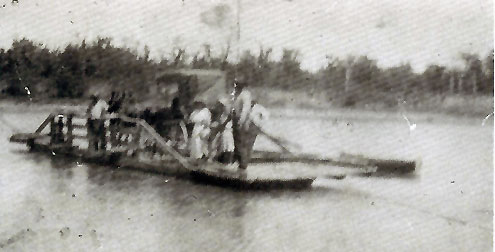
That same year another suspension bridge was finished at Sowell’s Bluff as well. It was assumed that the bridges had permanently replaced the ferries.
However, it wasn’t long before there was a major problem with the Sowell’s Bluff bridge: It collapsed into the icy waters of Red River on the night of January 29, 1934. Shortly afterwards, ferry traffic in the area resumed.
In its June 29, 1934 meeting, county commissioners voted to join the Texas Highway Department in operating a free ferry at Sowell’s Bluff for one year. They undoubtedly wanted it to be free since the suspension bridge, originally a toll bridge, had been free for roughly one year. Minutes of the meeting noted that the ferry boat was built by “the citizens, with assistance from the Highway Department.” The cost to the county was fifty dollars a month.
In late 1935 it was decided that operating the ferry was too expensive. The November 16 Bonham Daily Favorite reported that a committee formed by the Bonham Chamber of Commerce showed “that the cost of operating the ferry is entirely too high when the advantages are considered.” The committee noted that in “the first nine months the ferry . . . was open only 35 days due to high water and other trouble which could not be controlled.” It concluded by noting “an average of not over two or three trips are made daily by the ferry,” and that the approach on the Oklahoma side was in bad shape.
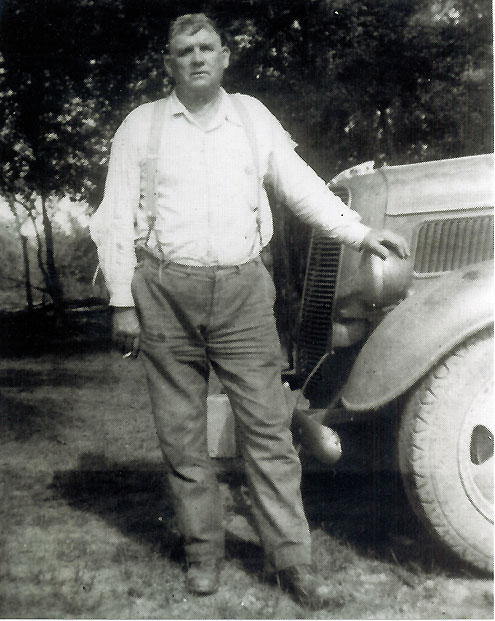
Ultimately, the chamber committee recommended closing the ferry. In its November 27 meeting, county commissioners followed the recommendation and ordered the county auditor “to discontinue paying rent on the Ferry at Red River.”
The December 2 Daily Favorite reported that operation of the ferry was resumed on a private basis by a Mr. J. T. Brown. It stated that Brown “is an experienced ferry operator and is prepared to give the people the very best possible service.” Brown announced that his charges would be: 25 cents for auto or two horse wagon, and “50 cents for four horse wagon or car and truck.” Exactly how long Brown operated the ferry is unknown.
By early 1939 the new Sowell’s Bluff bridge (the one presently there) was open to traffic. And once again it seemed that ferries were finished for good. But not so fast.
On December 4, 1940 the suspension bridge at Telephone collapsed. However, with the big two-lane bridge at Sowell’s Bluff open, ferry service at Telephone never resumed.
Then came the flood waters of the spring of 1941. By mid-June the Oklahoma approach to the Sowell’s Bluff bridge had washed away. And the materials needed to solve the problem were dedicated to the World War II effort. In short, the bridge would be out of use a little shy of five years.
Once again there were no bridges connecting Fannin County to Oklahoma.
Roughly a month after the washout, the Bonham Daily Favorite of July 11 reported that Doc Jackson, of Willis, Oklahoma, and a Mr. Cowan would operate a ferry just west of the bridge. Jackson was running two ferries near Whitesboro, and stated that he would move one of them to Sowell’s Bluff. County commissioner’s on both sides of the river promised to grade roads to the ferry.
By April 1946 the Sowell’s Bluff bridge was open again, and perhaps the last ferry was retired.
It is no exaggeration to say that from the mid 1800s to the late 1920s ferries made literally thousands of trips across Red River from Fannin County to Indian Territory/Oklahoma and back. And though they were counted out a couple of times, once in the 1930s and again in the 1940s, again and again they came to the rescue before disappearing from this neck of the woods.
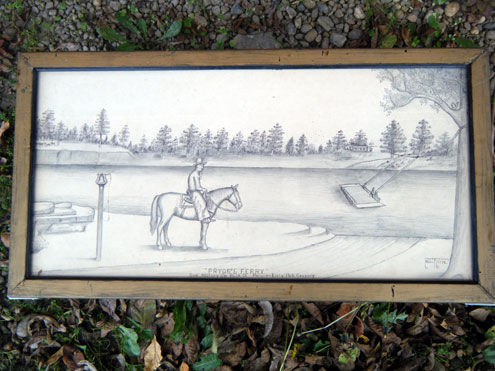
Thanks to Gregory Hall, Bill Griffis and Kenneth Moore
for loaning ferry pictures.